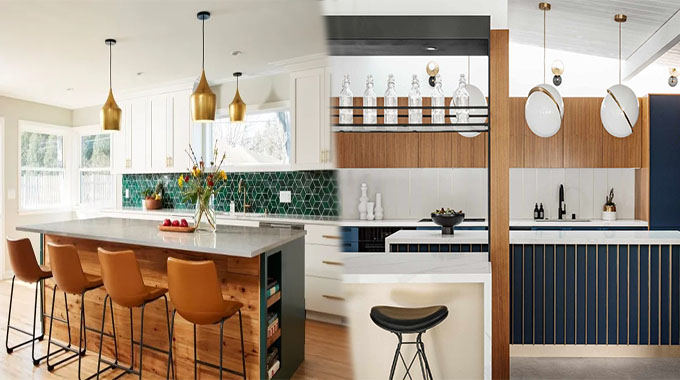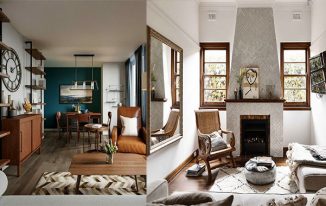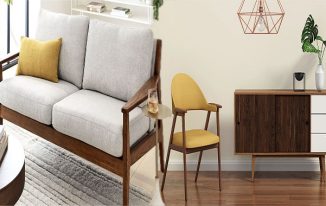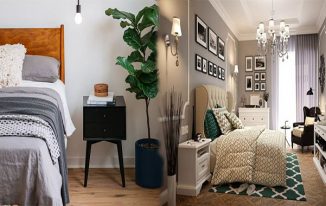If you want a more traditional look for your kitchen, you may want to consider a vintage modern kitchen design. This type of kitchen design features natural wood tones, built-in cabinets, and wood paneling. The vintage-modern style is also very popular, and can work well with a traditional or contemporary kitchen. This article explores several ways to incorporate vintage and modern design elements into a kitchen. It also covers many common mistakes that you should avoid, such as choosing a design that is too busy or too cluttered.
Wood paneling
If your vintage modern kitchen lacks natural light, wood paneling might be the answer. With the right paint job, you can add a fresh coat of color to your wood paneling. This shiplap style pairs well with a wide range of decor styles, including vintage modern and country chic. Adding a paneled wall to your island can help your black countertops stand out against the natural wood. In addition to adding texture, you can also choose a mirrored kitchen backsplash to add visual interest to your new paneling.
A wood paneling ceiling is a great way to add a unique design statement to a bedroom, while exposed beams add an edgy feel to the room. Unusual spaces can be difficult to decorate, but modern wood paneling can add a touch of rustic appeal to an awkward space. If you have a small kitchen, you might opt for paneled walls that fill the space. You can also add a paneled wall in the corner of a room to create a unique design statement.
Built-in cabinets
A midcentury modern kitchen can be a beautiful addition to a home, but there are several differences between this type of cabinet and a more traditional one. Midcentury modern kitchen cabinets tend to be more affordable than those from earlier decades. In addition, midcentury modern cabinets are organically shaped and simple to the point of being almost minimalist.
Midcentury modern design became popular during the years following World War II and is characterized by a positive and optimistic spirit. Despite their simple design, built-ins can add color to a room. Kendall Wilkinson Design used vibrant blue as an accent color. In contrast, sleek modern built-ins are geared towards entertaining, while media centers have been popular for some time. For a sophisticated setup, use a matte black color. This way, you can be sure that the cabinets will fit in well with any décor.
Wood-colored cabinetry
If your home is built in the late 1960s or early 1970s, wood-colored cabinetry may be the perfect way to update your kitchen. In this style, you can easily change or replace your existing cabinetry, adding a vintage and modern feel to your space. In fact, many vintage modern kitchens feature wood-colored cabinetry as the main focal point. To get the look, try applying a similar color palette to your existing cabinetry.
Mid-century design was influenced by mid-century designs, and many retro styles have a retro feel. Mid-century modern kitchens, in particular, often had wood paneling. While this style may seem dated and rustic, you can add some color to your kitchen by incorporating various shades of green. Consider adding linear pulls to your cabinets and using rounded pendant lights to tie everything together. Wood cabinetry can also be painted a different color.
Natural wood tones
Natural wood tones are all the rage these days and there’s a reason for that. They lend an earthy, refined feel to a minimal style. Natural wood can also bring a sense of comfort and warmth to a room. Whether you want a classic, vintage-inspired look or a more modern, clean look, natural wood can make any room come alive. But how do you incorporate it?
While mixing wood tones will definitely add a rich, warm feeling to your space, you must be careful not to overdo it or the room may end up looking too flat. Instead, use wood with varying shades to add texture and pattern to the room. For instance, if you’re decorating a kitchen with dark cabinets, choose wood with large grain to give it a more casual look. If you’re going for a more modern feel, then choose a lighter wood with a light tone. You can also choose a wood with a similar grain.
Retro-inspired color palettes
The colors of the 60s, 70s, and 80s have become very popular in recent years. Typically, this style is bold, whimsical, and campy, while vintage is older and more rustic. If you’re looking to create a vintage-style kitchen, you’ll want to look for items made during these decades. These are often collectibles, but you can get reproduction pieces that have the same charm.
Using midcentury modern color schemes can make your kitchen look authentic and up-to-date. Many kitchen appliances of the era were made in earth-toned materials. You can use these tones on your countertops, backsplash, and other details. Try pairing these colors with richer shades to achieve a vintage-inspired feel. But don’t be afraid to experiment! It’s possible to have a vintage-inspired kitchen that incorporates color in unexpected ways.
Vintage-inspired utensils
To add a touch of history and character to your kitchen, invest in vintage-inspired utensils. These tools are functional and off-grid, and they will give your kitchen a distinctly vintage look and feel. Plus, they’re cheap, and you’ll find a myriad of different styles, so there’s no reason not to incorporate them into your kitchen design.
One of the most useful pieces of vintage-inspired kitchen utensils is a teapot. While you might think modern metals don’t add to the vintage charm of a teapot, they have a flat taste and lack aroma. Not only are vintage teapots practical, they also add a touch of classic charm to your kitchen. Here are a few ideas for bringing vintage-inspired utensils into your kitchen.














